The idea of having one swing for your driver and one for your irons can scare some golfers.
I can tell you as a golf professional and low handicapper that the driver swing and iron swing are different, but not in the way you think.
There are a few key adjustments you can make to your setup and your mindset that will take care of everything.
Chances are you are probably making a few of these adjustments naturally, but if you don’t do them all, you sacrifice performance.
In this article on driver swing vs iron swing, I’ll show you the exact differences between a driver and an iron swing and give you the information you need to take this to the range this afternoon.
Is the driver swing the same as the iron swing?
No, the driver swing and the iron swing are not the same.
With a driver, you must hit up on the ball at impact (ascending angle of attack); with an iron, you must hit down and through your shot (descending angle of attack).
Driver swing vs Iron Swing (What are the differences?)
As I mentioned, the most significant differences between the driver and iron swings are setup and mindset.
Don’t start worrying yourself with things like swing planes or paths; if you follow my guidelines, those should work their way out.
Mindset
I firmly believe that you must have a general idea of what impact looks like and what you are looking for from a performance standpoint before you can swing the club.
Here is what your mindset should be for the iron vs. driver swing:
- A driver is hit on the upswing while the club is moving toward the finish position, there is never a divot with the driver swing, and we use a tee to get us the correct angle of attack.
- An iron is hit on the downswing; we hit the ball first and then grass while the club is moving to the bottom of the swing arc.
Stance Width For Your Driver & Irons
In golf, we always hear, “feet shoulder-width apart.”
This is correct, but it’s MORE correct for the iron swings.
With a driver, I like to see the feet slightly wider than shoulder width. Don’t exaggerate this; just slightly wider.
With the driver swing being about power and distance, the wider feet give you a stable base of support.
How will you know if your feet are too wide?
You won’t be able to properly and fully release the club, which leads to the dreaded slice or unwanted fade, where the right side of the golf course comes into play.
Ball Position For Your Driver & Irons
The ball position with the driver is inside left heel.
- This position promotes hitting the golf ball on the upswing (which is what you want).
The ball position for the irons starts in the center of your stance for short irons and wedges and moves slightly forward – toward your lead foot – for mid and long irons.
However, it should never move towards the left heel like the driver. If you do this, expect issues with turf interaction (thin/fat shots) and total distance.
Hybrids are a little different than irons; check out our hybrid vs. iron guide if you need more help there.
Shoulder Tilt
You will set up with slightly more shoulder tilt for your driver than with your irons.
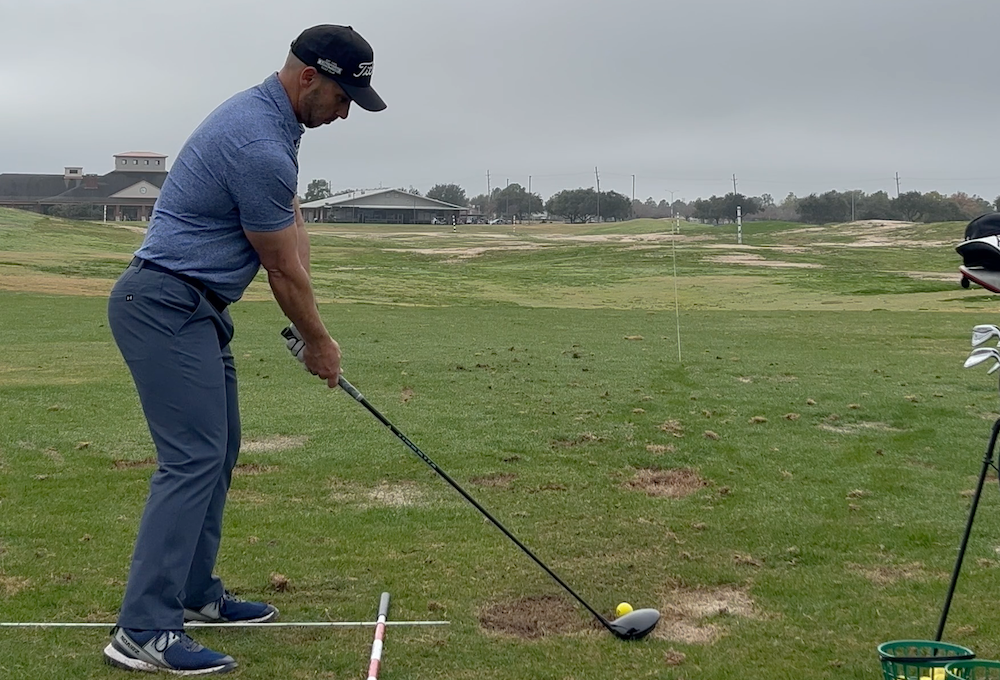
The right shoulder (for the right-handed player) is dropped down. I also like to feel the shoulder pushed back just a little as well.
This setup feels and looks a little more athletic, and it allows us that impact position where the golf club is traveling up on the ball and not down.
With the iron swing, the shoulders should be level, like the legs, and your head will be more over the ball than behind it.
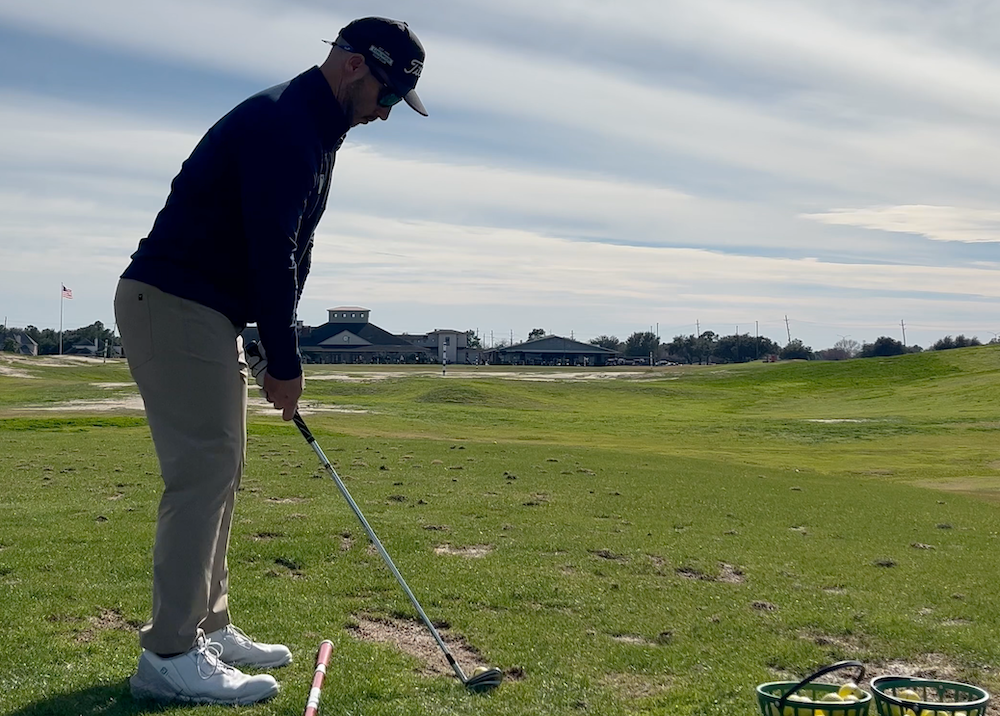
Weight Distribution
The weight distribution is something you will have to fine-tune a bit based on the ball flight you are looking for.
However, as soon as you get that shoulder tilt with your right shoulder dropping, you probably feel a little bit of weight collect on your right side.
That’s a good thing.
I set up to hit a driver with about 55 to 60 percent of my weight on my right side.
As the club swings back, even more weight is transferred, and then the power move is when I’m able to get this weight transferred to the left side through impact.
With an iron shot, I do the exact opposite of what I do with the driver.
Take about 55 percent of your weight and put it on your left side.
This starting point should allow you to hit down and through the ball, get your shots higher in the air, and make that clean divot after the ball.
Backswing Rotation
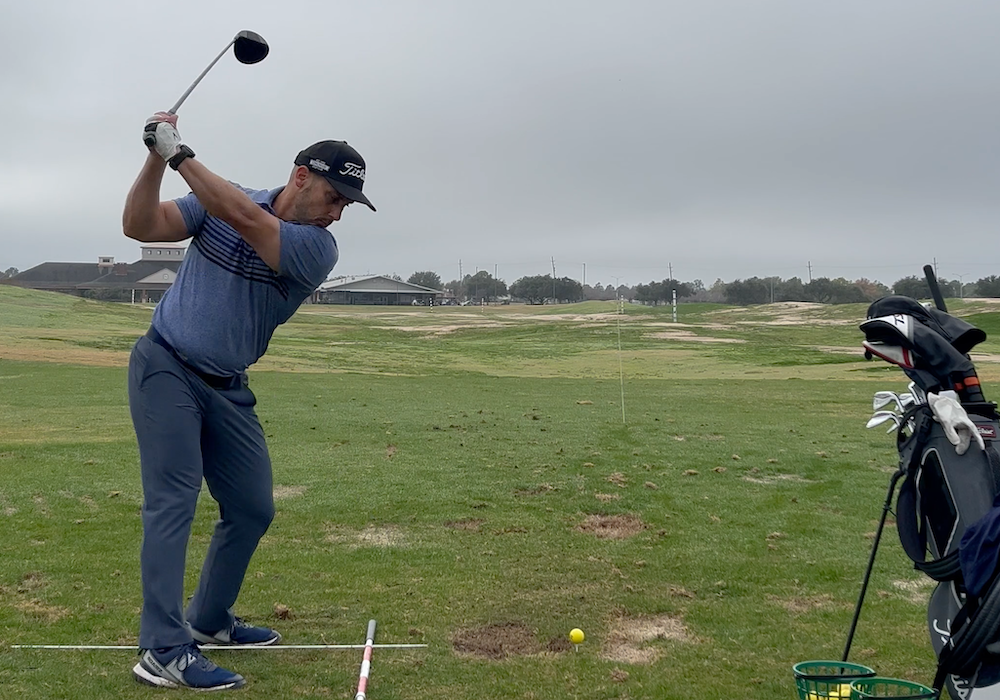
For backswing rotation, expect the motion to be bigger with the driver.
You will see more of a full rotation, the head will stay behind the ball, and the swing arc will be wider.
When you get to impact, your head should be behind the ball, with some of the weight transferred to the left side.
With the iron swing, the head and chest should stay almost over the ball for the entire swing.
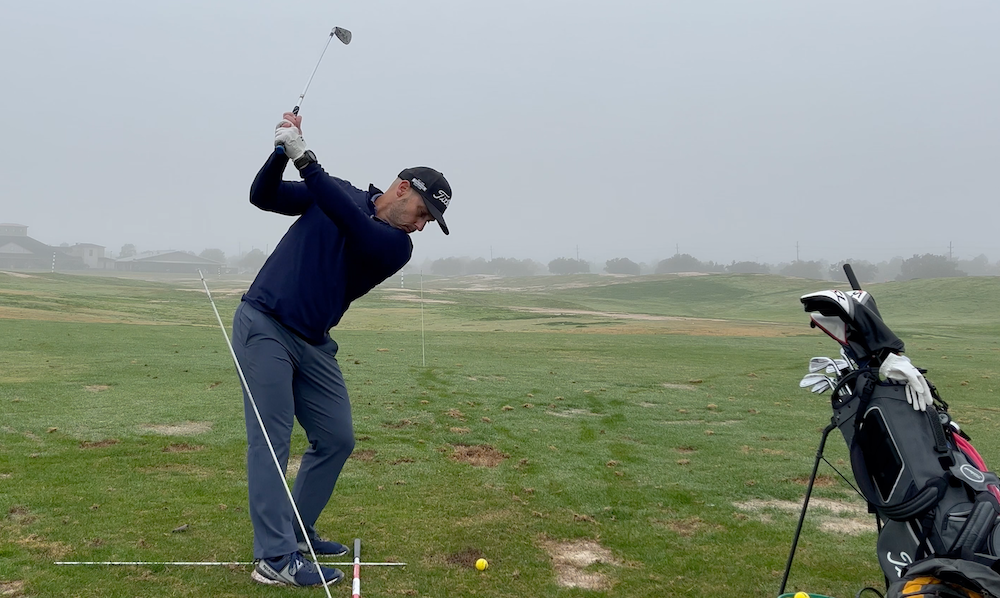
Staying more centered in the iron shots helps improve turf interaction and get more consistent golf shots.
Your backswing rotation will be unique to your swing, but I like to think of it as being bigger and more distance-producing with the driver than it is with the iron.
Think of irons as more like precision tools, the driver as a distance machine.
Impact Position
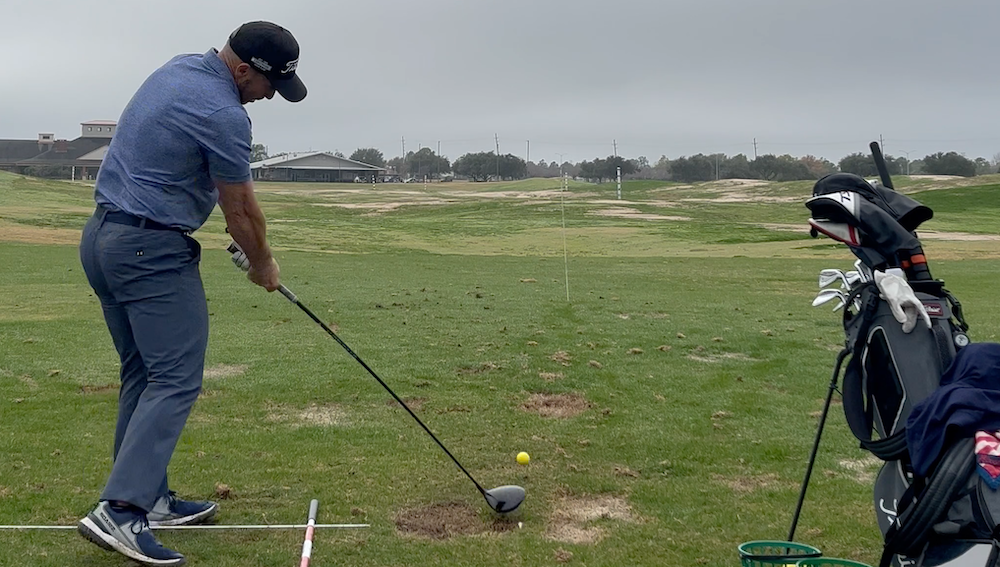
If you have done everything right in the above steps, impact is easy!
With a driver, simply keep your head behind the ball while transferring the weight towards the left side and let the arms swing freely out and up.
Up is the key element here if you want to hit a solid drive.
With the iron, the action is essentially the opposite.
You will be hitting down and through the ball, compressing it, with weight on the left side and
your chest over the ball.
The impact position with an iron feels more controlled and compact compared to the driver’s.
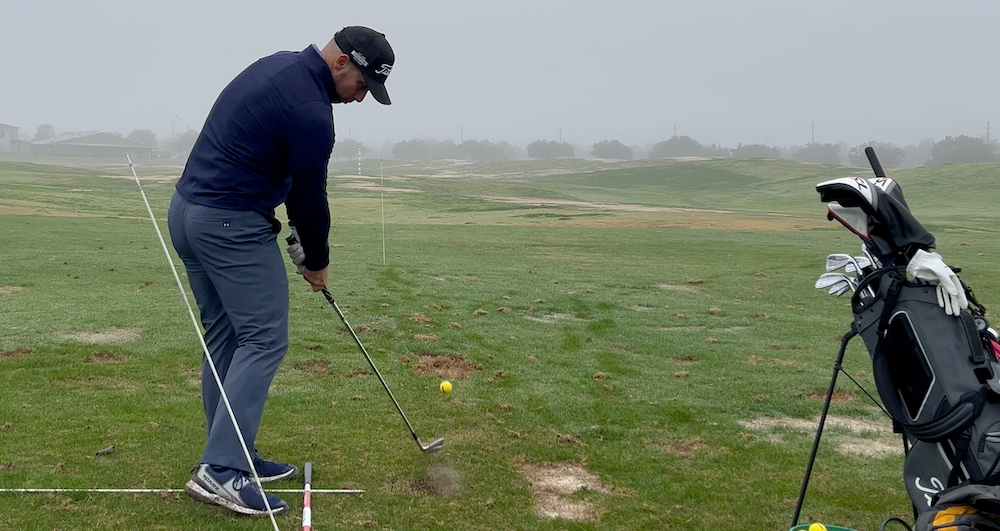
Follow Through
The follow-through for both the iron and the driver swing will feel really similar.
However, with the iron swing, there is not all that much left to do, your head is over the ball, and your weight is almost all on your left side already.
All that is needed is a slight rotation to the complete finish.
The driver takes a little more work.
Remember, your feet are wider, so you have more ground to cover, and when you hit the ball, your head is behind it.
Many golfers fall backward on the driver’s swing, which means you didn’t have enough weight
transferred to the left side at impact.
That costs you both distance and accuracy.
Driver Swing vs. Iron Swing Checklist
Here’s a quick checklist you can use to make sure you are making the proper adjustments on the course for driver and iron swings.
Driver swing
- Hit up on the ball to get maximum distance
- Feet slightly wider than shoulder width
- The ball placed on the inside of the left heel
- Shoulder tilt with right shoulder dropped down
- More weight on the right side at the setup
- Larger rotation, the chest turns away from the ball
- The head stays behind the ball at impact
Iron swing
- Hit down on the ball to get maximum accuracy
- Feet shoulder width apart
- Ball in the center of the stance
- Minimal shoulder tilt, remain square
- 55% of the weight on the left side at setup
- Head and chest stay more over the golf ball during the swing
- Impact has most of the weight on the left side, with the head over the ball
Is it harder to hit driver or an iron?
I think they are equally difficult for different reasons.
The driver swing is bigger, more athletic, and easier for players who have experience in other sports.
The problem is the driver itself. The long shaft and low loft make it hard to be consistent.
The iron swing is more compact and controlled, and because of that, the slightest error has a big impact on where the golf ball goes.
In addition, we have so many irons in the bag that the slight adjustments between each one can feel overwhelming.
I think the most important thing to remember here is that you don’t have to think of these as two different golf swings.
Instead, you make a series of tweaks or adjustments before each swing to hit the ball solidly.
FAQ
Here are a few of the most commonly asked questions about the driver swing vs. irons swing.
Do you swing the same for a driver and an iron?
A driver swing and an iron swing are not the same. Driver swings start with an entirely different setup because of the way we make impact with a driver. Irons require a descending angle of attack that encourages a different type of swing.
Do you swing a driver faster than an iron?
Most golfers swing a driver faster than an iron because of the length and weight of the club.
What is the correct golf swing for a driver?
A driver has a shallow arc with plenty of extension and width. The club makes impact with the driver as it is traveling up.
Should I swing my driver as hard as I can?
Yes, swing the driver as fast as you can. But, you have to maintain your balance, swing path, and center-face contact. Otherwise, slow down.
Driver Swing vs Iron Swing Conclusion
The driver swing is different from the iron swing; there is really no way around it.
However, I hope you feel like the differences are not as overwhelming as you once thought.
This is not about learning two different swings; it’s about making the small adjustments that make a big impact.
Thanks for checking out our driver swing vs iron swing guide. Post any questions or comments below and I’ll get to them as soon as I can.

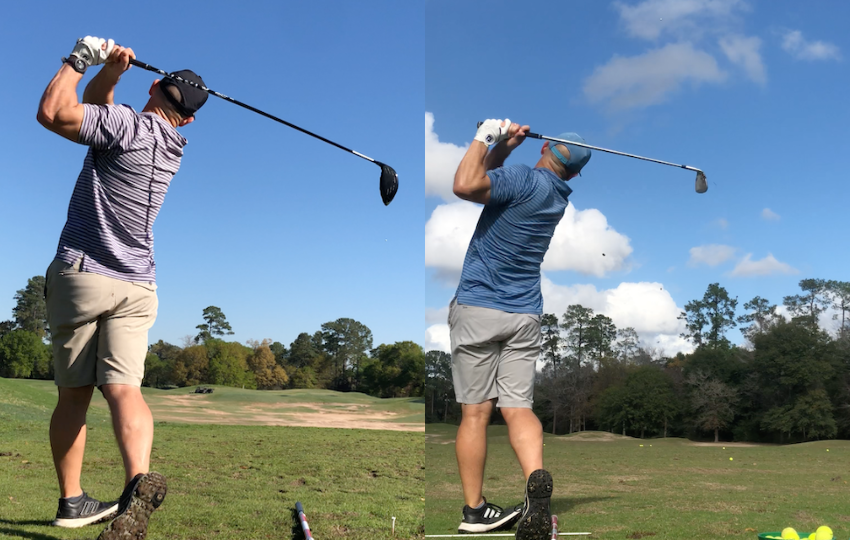
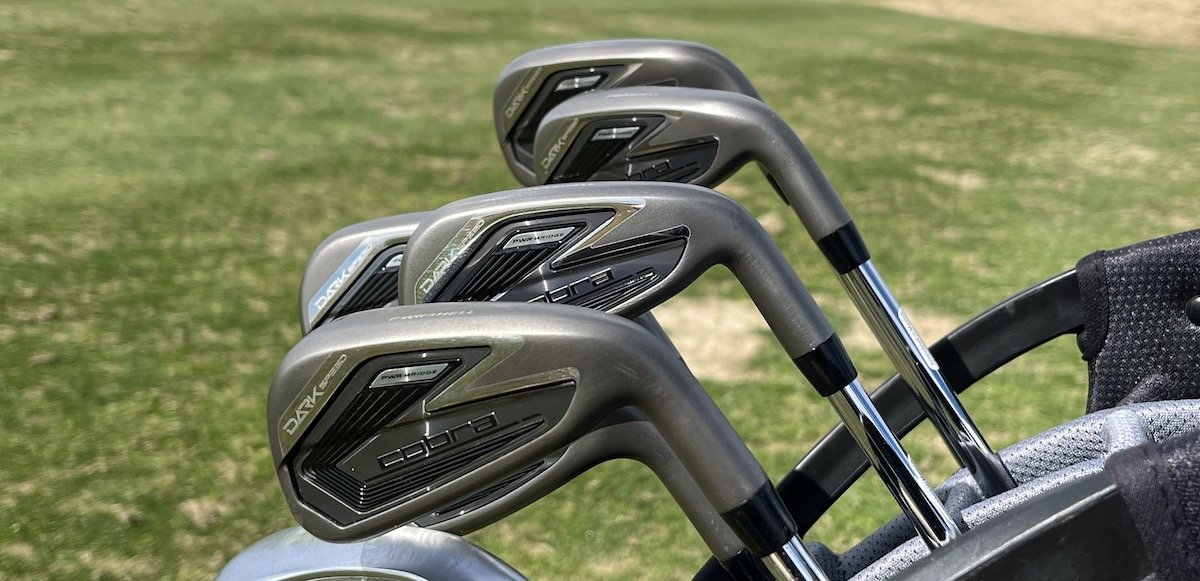
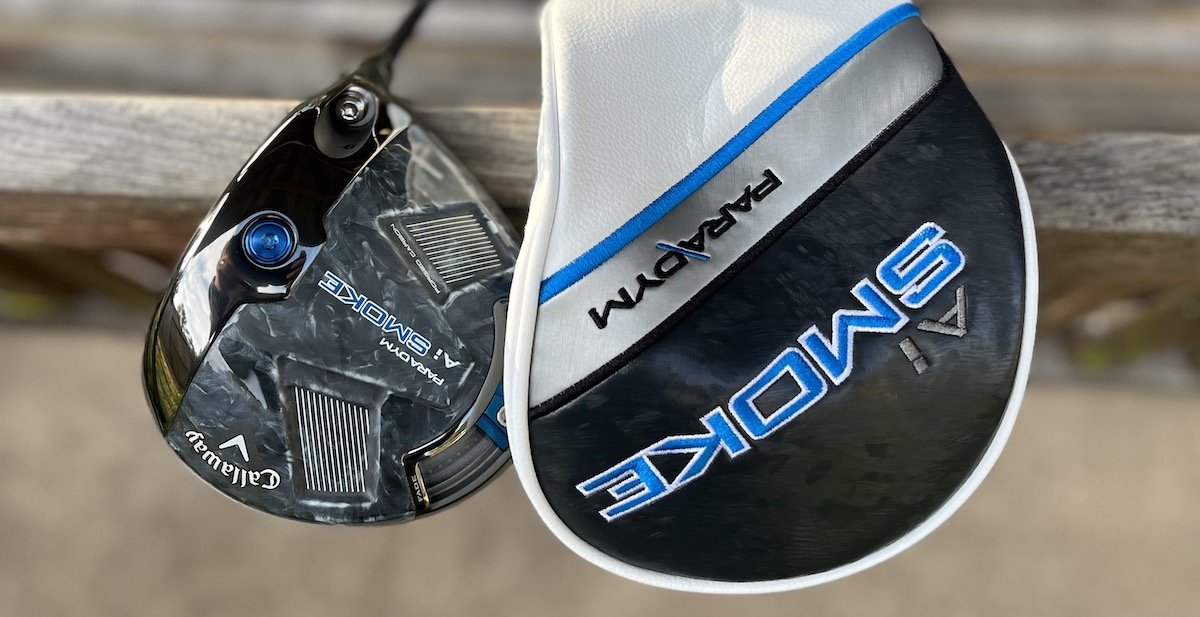
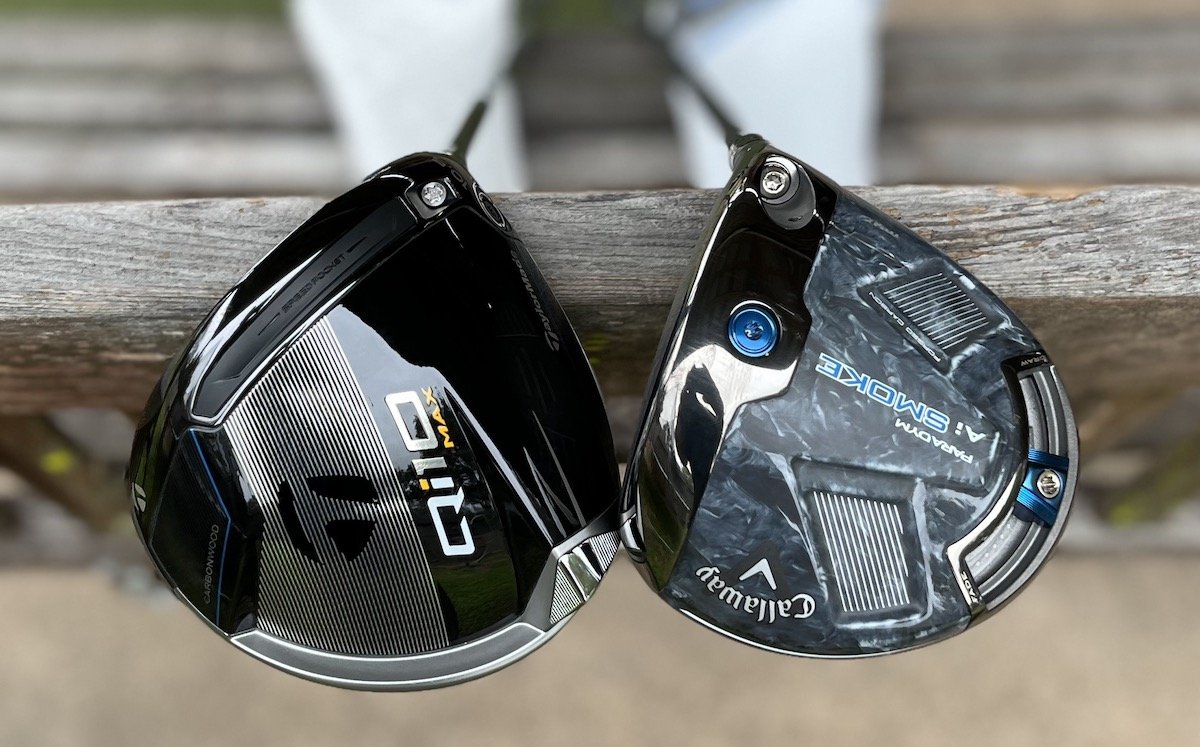

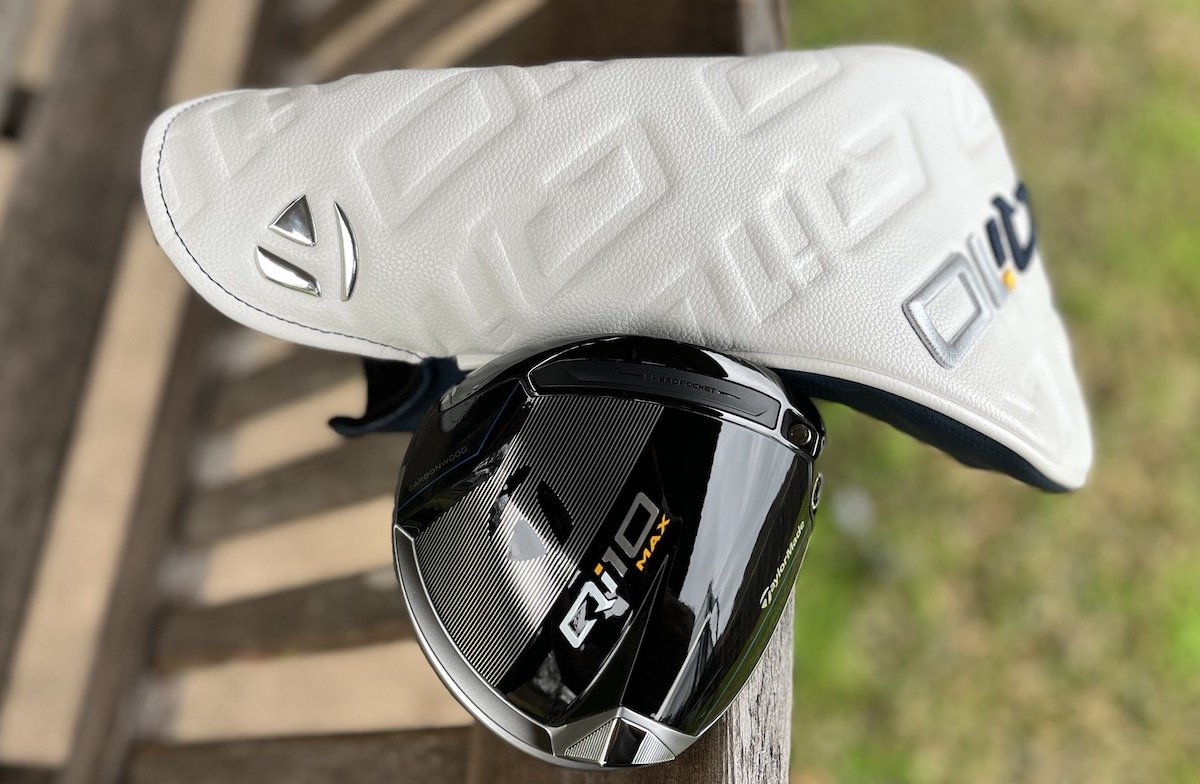
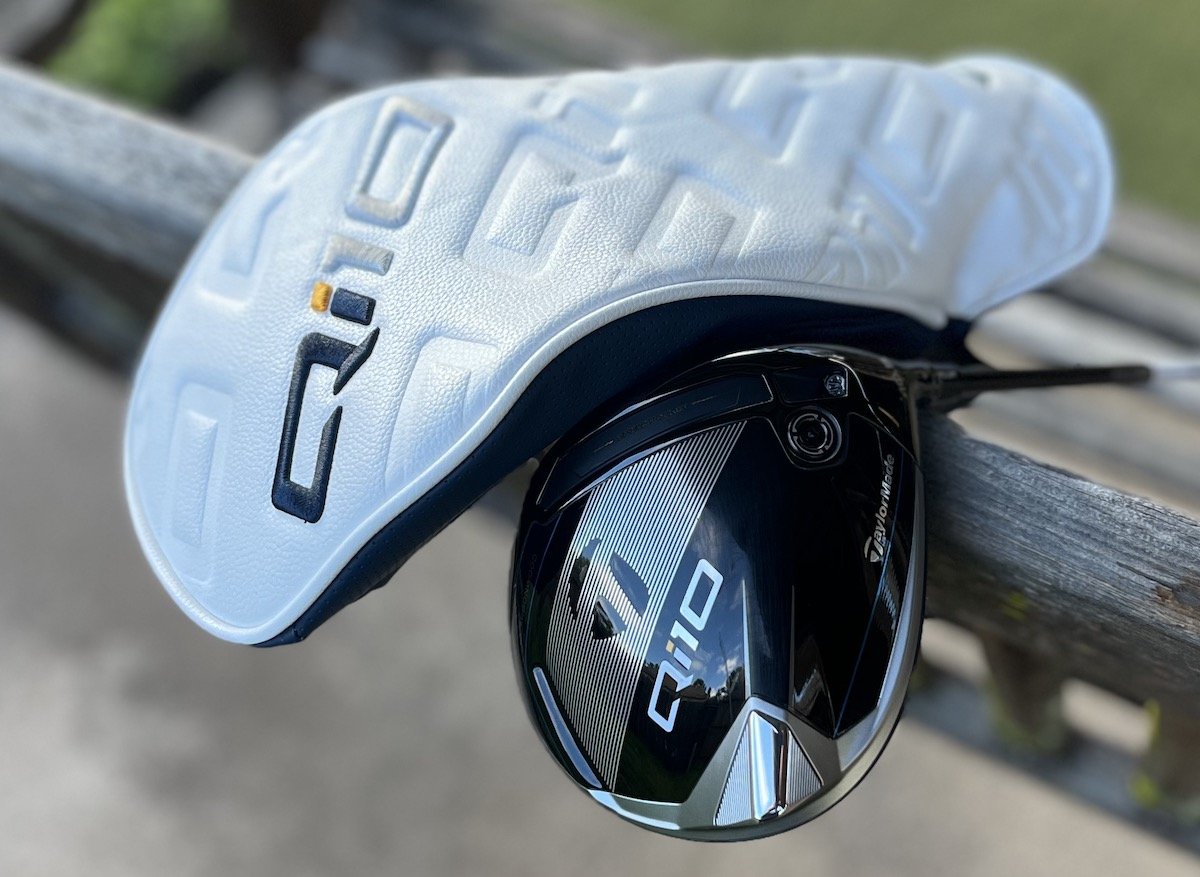
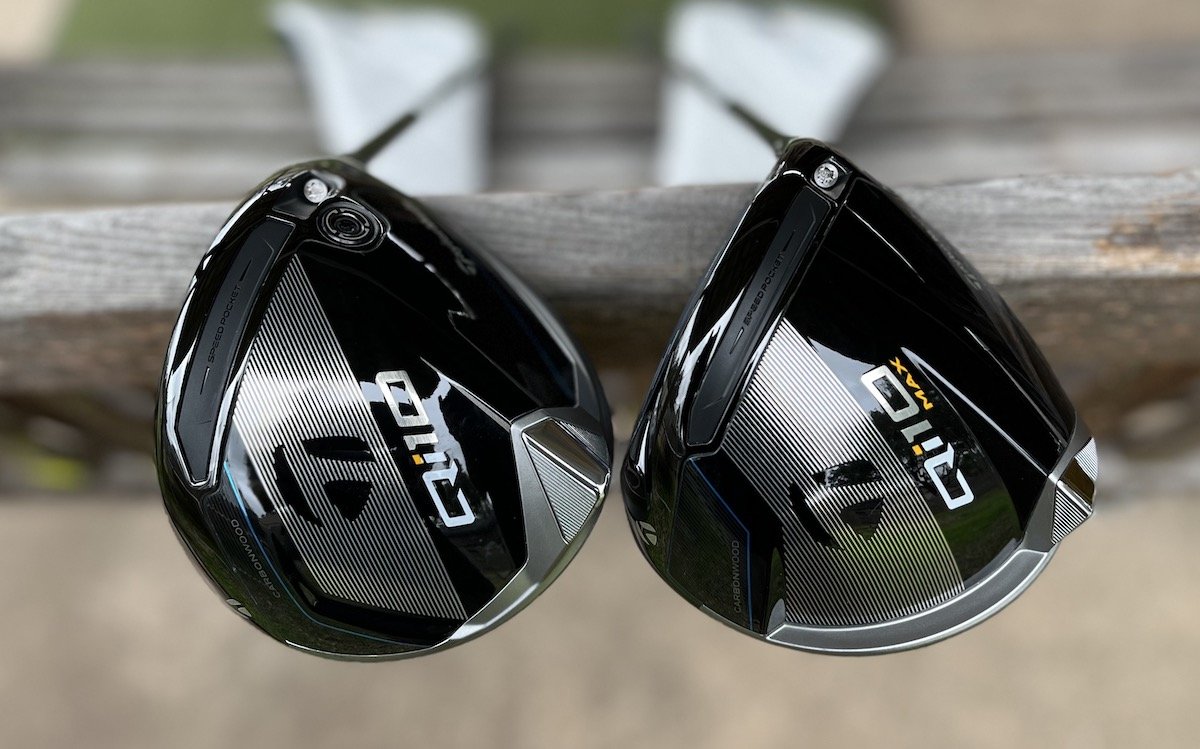
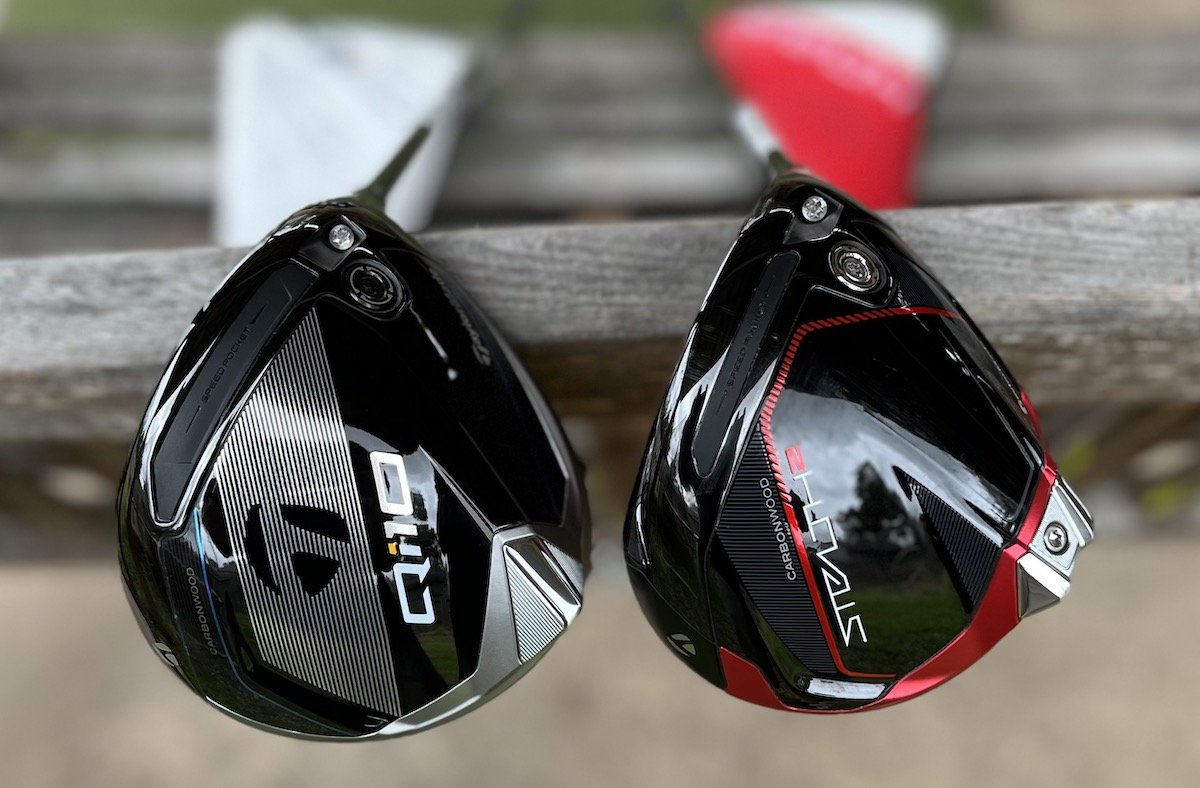


What type of swing to use when hitting a 4 iron off a tee? Should I use a Driver swing or an iron (off the turf) swing?
Iron swing, Bob. Just make sure the ball is forward of center of your stance. Say 1 to 2 balls.
Do you grip differently for driver than iron?
Hi Scott. No, use the same grip.